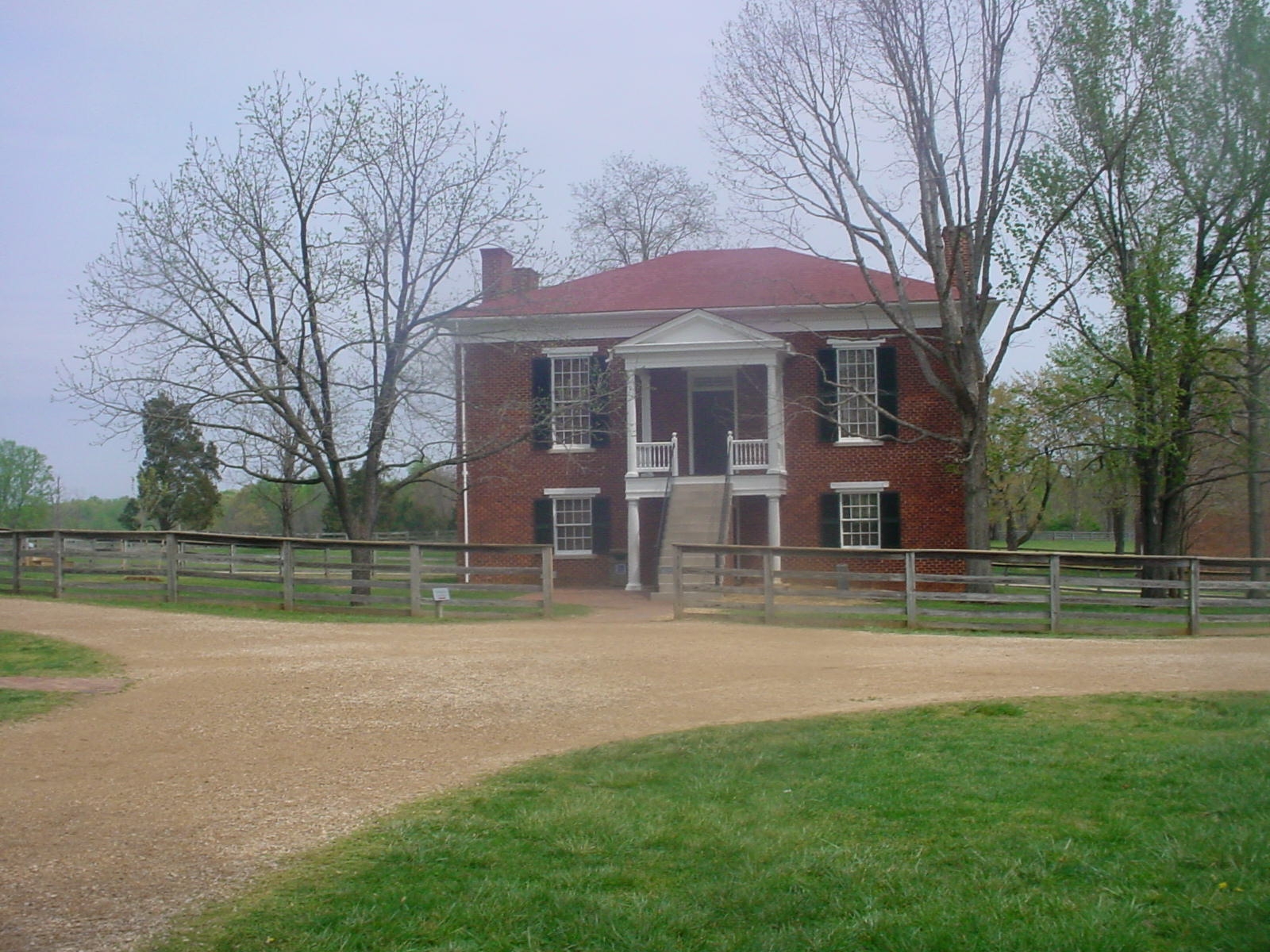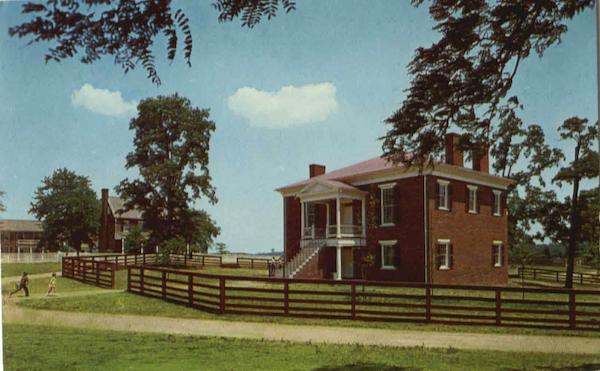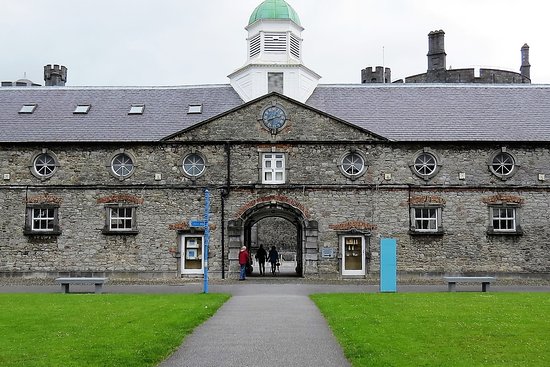Table Of Content

In 1933, the monument site was transferred from the War Department to the Department of the Interior. A 1939 Congressional act authorized acquisition of additional land, and in 1940 Appomattox Court House National Historical Monument was created by the Secretary of the Interior. Around this time, interest in restoring the village abounded, probably influenced by recent work at nearby Colonial Williamsburg. Following World War II, restoration and repair focused on the thirteen historic buildings and restoration of historic fields and fences. From 1949 to 1968, the National Park Service also reconstructed fourteen buildings, including the McLean House.
Physical Address
A private effort to commemorate Appomattox Court House for its association with the Civil War was begun in the late 1800s by the Appomattox Land Company under the leadership of General S.S. Burdette. However, in 1891, the centerpiece of the commemorative effort, the McLean House, was sold to another group of investors. Following dismantling of the house in 1893, the building lay in piles rotting near its original site. Plans to create a memorial and park languished until 1893, when ten commemorative iron tablets were erected. In 1930, the War Department was authorized to acquire one acre of land to erect a monument on the site of the burned courthouse.
Appomattox Court House Cultural Landscape (U.S - National Park Service
Appomattox Court House Cultural Landscape (U.S.
Posted: Fri, 08 Apr 2016 04:34:24 GMT [source]
Visitor Centers

Appomattox Court House National Historical Park is comprised of many of the village's original historic structures, along with several reconstructed buildings on approximately 1,700 acres in rural Virginia. The Wilmer McLean home, where the surrender was signed, is open to the public. Begin your visit at the visitor center in the reconstructed courthouse building in the center of the historic village. There you can get information and recommendations for your visit.
Nearby Listing
Walk through each headquarter’s camp or along the banks of the Appomattox River and search for red-bellied, downy and hairy woodpeckers wherever you hear tapping. This could also lead to white-breasted nuthatches amongst the more numerous tufted titmice and Carolina chickadees. You can also visit one of our nine hiking trails including our interpretive nature trail and pollinator gardens. During spring and fall the treetops support passing neotropical migrants, such as black-throated green and Blackburnian warblers, blue-headed vireos and numerous blue-gray gnatcatchers.
Measured drawings including elevations and materials specifications lists were produced, the house was dismantled and packed for shipping, but due to cash flow and legal problems the plan was never brought to fruition. The home sat dismantled in piles prey to vandals, collectors, and the environment for fifty years. The open fields in the area, with the help of prescribed burning and replanting, are gradually being returned to their native grasses. Check the edges of these fields in the early morning or at dusk for white-tailed deer grazing on the young shoots and in winter, watch for northern harriers cruising for rodents.
The site is historically significant for its association with the final battle of the Civil War and Confederate General Robert E. Lee's surrender to Union Lieutenant General Ulysses S. Grant on April 9, 1865. The park is also significant in areas of military, conservation, commemoration, landscape architecture, and archeology. In addition to the historical village, the park supports over one thousand acres of woodlands and open meadows surrounding the village.
Partners - Appomattox Court House National Historical Park (U.S - National Park Service
Partners - Appomattox Court House National Historical Park (U.S.
Posted: Tue, 31 May 2022 07:00:00 GMT [source]
After the war, McLean would famously observe that "The war began in my front yard and ended in my front parlor." The surrender of the Army of Northern Virginia – the most celebrated Confederate army – followed a defeat in the final battle of the war in Virginia. The Battle of Appomattox Court House was the climax of a campaign that began eleven days earlier at the Battle of Lewis’ Farm.
Civil War and further decline
The village itself began as the community of Clover Hill, which was made the county seat of Appomattox County in the 1840s. The village of Appomattox Court House entered a stage of decline after it was bypassed by a railroad in 1854. In 1930, the United States War Department was authorized to erect a monument at the site, and in 1933 the War Department's holdings there was transferred to the National Park Service.
He accompanied Grant to the McLean house on April 9 and witnessed the surrender. Cornered by Federal forces, General R. E. Lee faced the decision to surrender his forces. Gen. Lee's decision to surrender was the product of eight day campaign that ended at Appomattox Court House. Make a tax-deductible gift today to provide a brighter future for our national parks and the millions of Americans who enjoy them. After Lee left the McLean House on April 9, some of the Union officers present promptly bought much of the furniture in McLean’s parlor.
The event was attended by an audience of approximately 20,000.Click here to View a PDF File of the The Timeline of the McLean House. On April 10th 1940 Appomattox Court House National Historical Monument was created by Congress to include approximately 970 acres. In February 1941 archeological work was begun at the site, then overgrown with brush and honeysuckle. Historical data was collected, and architectural working plans were drawn up to begin the meticulous reconstruction process. The whole project was brought to a swift stop on December 7, 1941 with the bombing of Pearl Harbor by Japanese forces causing the United States entry into World War II.
The phenomenon was not limited to the upper echelons – soldiers of all ranks from both armies tried to take a piece of their experience home with them. Northerners bought Confederate dollars from the Rebels, and soldiers tore up their own regimental flags as souvenirs. The surrender was a highly emotional affair for the participants, many of whom had been fighting for four years. Soldiers on both sides cheered and cried – often at the same time – upon hearing the news. On April 8, the Confederates discovered that the army’s escape was blocked by Federal cavalry.
With over a dozen buildings, a museum, theater, hiking trails, driving pull offs, and a park store, we suggest allowing at least two hours for your visit. After Lee's surrender, the Army of Tennessee remained in the field for over two weeks, until Johnston finally surrendered the army and numerous smaller garrisons to Maj. Gen. William T. Sherman on April 26. Johnston's surrender was the largest of the war, totaling almost 90,000 men. In summer 1861, Wilmer McLean and his family lived in Manassas, Virginia. His house was on the outskirts of the battlefield, and was used as Gen. P.G.T. Beauregard’s headquarters. After the battle, McLean began selling sugar to the Confederate Army, and moved to Appomattox Court House where he believed he would be able to avoid the fighting and the Union occupation, which impeded his work.
How much do you know about the final days of the war in Virginia? Here are some facts about the battle and the surrender to help shed a little light for newcomers and test the knowledge of veterans. During the warmer seasons (Spring-Fall), the park offers a variety of guided programs for visitors to delve deeper into the park's many stories. Take a Ranger-led guided program, or hear a firsthand experience of the Surrender and what followed from a Living Historian!
The site was greatly enlarged in 1935, and a restoration of the McLean House was planned but was delayed by World War II. Several restored buildings (including the McLean House and the courthouse), as well as a number of original 19th-century structures are situated at the site. Since the nineteenth century, a more concerted effort has been made to preserve the history of Appomattox Court House for everyone to experience. The American Battlefield Trust has preserved additional acreage which includes ground used during Griffin’s counterattack and land where Bvt. Maj. Gen. George Armstrong Custer’s cavalry division checked an advance down the LeGrand road by members of Brig. Gen. Martin Gary’s Confederate cavalry brigade.
Appomattox Court House, in the American Civil War, site in Virginia of the surrender of the Confederate forces to those of the North on April 9, 1865. After an engagement with Federal cavalry, the Confederate Army of Northern Virginia was surrounded at Appomattox, seat of Appomattox county, Virginia, 25 miles east of Lynchburg. Three miles to the northeast, at the former county seat, known as Appomattox Court House, Gen. Robert E. Lee surrendered to Gen. Ulysses S. Grant, thus effectively ending the Civil War. In 1954 the entire 968-acre area was designated a historical park. The Appomattox Court House National Historical Park is the preserved 19th-century village named Appomattox Court House in Appomattox County, Virginia. The village was named for the presence nearby of what is now preserved as the Old Appomattox Court House.

No comments:
Post a Comment